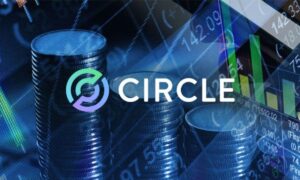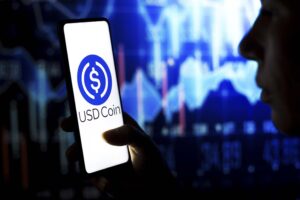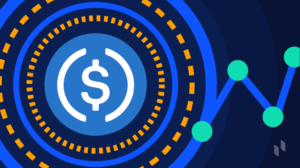
USDC support change is imminent. Binance will stop supporting USDC transactions on the TRC20 network from April 5, 2024, in response to Circle’s policy changes. (Read More)
Why did Binance End USDC Transactions on TRC20 Network?
Binance decided to end support for USDC transactions on the Tron (TRC20) network following Circle’s lead. Circle, the issuer of USDC, recently discontinued its support for USDC on the Tron network. As a result, users will no longer be able to send or receive USDC using the TRC20 network on Binance.
In response to Circle’s decision to discontinue USDC support change on the Tron (TRC20) network, Binance, a prominent cryptocurrency exchange, is making necessary adjustments. Starting from April 5, 2024, at 02:00 (UTC), Binance will cease support for USDC deposits and withdrawals via TRC20. However, it’s important to note that USDC trading on Binance remains unaffected, and users can continue to trade the stablecoin as usual.
Usability and liquidity of digital assets are significantly impacted
The implications of this change extend beyond Binance’s platform. Usability and liquidity of digital assets are significantly impacted when major tokens like USDC experience network-specific adjustments. Binance’s proactive response reflects its commitment to user security and adaptability in a rapidly evolving crypto landscape.
As the industry adapts to these shifts, investors and users are advised to adjust their transaction methods accordingly. The dynamic nature of the cryptocurrency space necessitates swift responses to regulatory changes and decisions made by other entities within the ecosystem. Binance’s announcement serves as a reminder that vigilance and flexibility are essential in this ever-changing environment.
Why did Circle discontinue USDC on TRC20?
 Circle, the issuer of USDC, recently decided to discontinue support for USDC on the Tron (TRC20) blockchain. While Circle hasn’t explicitly stated the reasons, experts point to a combination of factors for this USDC support change:
Circle, the issuer of USDC, recently decided to discontinue support for USDC on the Tron (TRC20) blockchain. While Circle hasn’t explicitly stated the reasons, experts point to a combination of factors for this USDC support change:
1. Regulatory Concerns:
– Tron founder Justin Sun has faced regulatory scrutiny in the past.
– Circle may have considered this when evaluating the network’s suitability for USDC.
2. Strategic Priorities:
– Circle continually assesses the suitability of blockchains where USDC is supported.
– Their decision aligns with their efforts to ensure that USDC remains trusted, transparent, and safe.
In summary, Circle’s move to discontinue USDC on TRC20 reflects a combination of regulatory considerations and strategic priorities.
What other blockchains support USDC?
USDC (USD Coin)**, a popular stablecoin, is supported on several blockchain networks. Here are some of the major ones:
1. **Ethereum (ERC-20)**: USDC originated on the Ethereum blockchain and remains one of the most widely used versions.
2. **Solana (SPL)**: USDC is natively available on Solana, known for its high throughput and low transaction fees.
3. **Avalanche (ERC-20)**: USDC is supported on Avalanche, a platform focused on scalability and decentralization.
4. **Tron (TRC20)**: Although Binance recently ended support for USDC on the Tron network, it was previously available there.
5. **Algorand (ASA)**: USDC is deployed as an Algorand Standard Asset (ASA) on the Algorand blockchain.
6. **Stellar (Stellar Asset)**: USDC is available natively on Stellar, which emphasizes fast and low-cost transactions.
7. **Flow (Flow Token)**: USDC is supported on Flow, a blockchain designed for decentralized applications and games.
8. **Hedera (Hedera Token)**: USDC is available on Hedera Hashgraph, known for its consensus algorithm and enterprise use cases.
9. **Polygon (ERC-20)**: USDC is natively available on Polygon (formerly Matic), a layer-2 scaling solution for Ethereum.
10. **Polkadot (Assets)**: USDC will soon be supported on Polkadot, a multi-chain framework.
These integrations allow USDC to operate seamlessly across various ecosystems, providing flexibility and accessibility for users and developers.
How do I choose the right USDC version for my needs?

Choosing the right **USDC (USD Coin)** version depends on your specific needs and preferences. Let’s explore the options:
1. **Ethereum (ERC-20) USDC**:
– **Pros**:
– Established and widely used.
– High liquidity and availability on most exchanges.
– Interoperable with Ethereum-based DeFi platforms.
– **Cons**:
– Higher gas fees due to Ethereum network congestion.
– Limited scalability during peak times.
2. **Solana (SPL) USDC**:
– **Pros**:
– Native to the Solana blockchain, offering fast and low-cost transactions.
– Growing ecosystem with various DeFi projects.
– Ideal for users active on Solana-based platforms.
– **Cons**:
– Limited availability on non-Solana exchanges.
– Still relatively new compared to Ethereum.
3. **Other Blockchains**:
– USDC is also available on other blockchains like **Avalanche**, **Tron**, **Algorand**, and more.
– Consider the specific features and benefits of each blockchain when choosing.
In summary, assess your priorities—whether it’s transaction speed, cost, or ecosystem compatibility—to determine the right USDC version for your needs.
What are the risks of using USDC on different blockchains?
When using **USDC (USD Coin)** on different blockchains, there are several risks to consider:
1. **Market Volatility**:
– The value of USDC can fluctuate due to market volatility.
– During high volatility periods, the premium or discount of USDC may deviate slightly from its peg to the US dollar³.
2. **Blockchain-Specific Risks**:
– Each blockchain has its own characteristics and risks.
– Consider factors like scalability, security, and regulatory compliance.
– For example, Ethereum’s gas fees can be high during congestion, affecting the cost of USDC transactions.
3. **Validator and Network Risks**:
– Validators play a critical role in PoS blockchains.
– If validators behave maliciously or go offline, it can impact staking rewards and network security.
– Research validators’ reputation and performance.
4. **Liquidity and Accessibility**:
– Some blockchains have limited liquidity for USDC.
– Ensure that you can easily convert USDC back to other assets when needed.
5. **Regulatory and Legal Risks**:
– Different blockchains operate under varying regulatory environments.
– Ensure compliance with local laws and regulations when using USDC.
6. **Smart Contract Risks**:
– USDC interacts with smart contracts on different blockchains.
– Smart contract vulnerabilities can lead to loss of funds.
– Audit smart contracts and use reputable platforms.
7. **Network Upgrades and Forks**:
– Blockchains undergo upgrades and forks.
– Ensure that your USDC remains compatible during network changes.
In summary, assess the risks based on your specific use case, investment horizon, and risk tolerance when choosing a blockchain for USDC transactions.

Circle and its role in the crypto industry.
**Circle**, founded in 2013, has played a significant role in the crypto industry. Let’s explore its background and contributions:
1. **Founding and Purpose**:
– Circle aimed to facilitate the widespread adoption of digital financial systems, including cryptocurrencies like **Bitcoin** and **Ethereum**.
– From the start, Circle positioned itself as a corporate and careful player in the cryptoverse, focusing on mainstream applications and high-profile partnerships.
2. **USDC Stablecoin**:
– Circle found its calling with the **USDC (USD Coin)** stablecoin.
– USDC is a fully-backed stablecoin, meaning that for every USDC token in circulation, there is an equivalent amount of US dollars held in reserve.
– Circle prints USDC tokens on blockchains like Ethereum, making them accessible for various financial transactions.
3. **USDC Growth**:
– USDC has experienced remarkable growth, going from $1 billion to $25 billion in circulation.
– It competes directly with **Tether (USDT)**, currently the top stablecoin.
– Circle projects even more substantial growth, aiming for $83 billion in USDC issuance by next year and $200 billion by 2023.
4. **Centre Consortium**:
– USDC is a joint project between Circle and **Coinbase**, operating through an entity called **Centre**.
– The collaboration ensures the stability, transparency, and trustworthiness of USDC.
5. **Financial Applications**:
– While currently used mainly by crypto traders for liquidity management, stablecoins like USDC are expected to have broader financial applications.
– These applications could include payments, decentralized finance (DeFi) loans, and more.
In summary, Circle’s focus on USDC has positioned it as a key player in the stablecoin ecosystem, contributing to the growth and adoption of digital financial systems and this USDC support change is definitely their perogitive .
Sources:
https://www.binance.com/en/support/announcement/binance-will-cease-support-for-deposits-and-withdrawals-of-usdc-via-the-tron-network-trc20-33df0ff0e2e94259950b5c4b1f4952f7
https://dailycoin.com/binance-ends-usdc-trc-20-support-on-tron-network/
https://www.altcoinbuzz.io/cryptocurrency-news/binance-to-drop-trc-20-usdc-support/
https://www.circle.com/blog/circle-is-discontinuing-support-for-usdc-on-the-tron-blockchain
https://insidebitcoins.com/news/circle-announces-usdc-will-be-supported-in-five-more-blockchains
https://www.forbes.com/advisor/investing/cryptocurrency/how-to-buy-usd-coin-usdc/
https://www.hedgewithcrypto.com/what-is-usdc/





